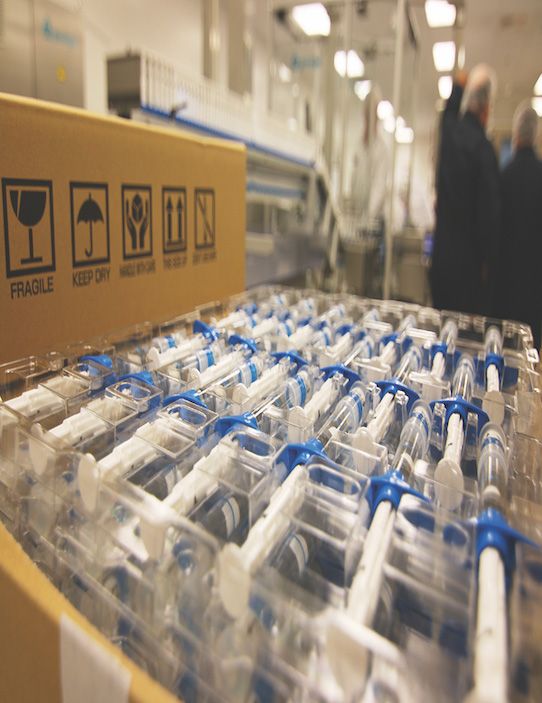Reducing the hurdles for complex generic drug development
Ever since Scott Gottlieb took over as commissioner at FDA, he has sounded a constant theme of accelerating the approval of generic drugs as a way for FDA to rein in rising drug costs. In mid-October, FDA issued more than 50 new or revised guidances for creating generic versions of specific drugs. At the beginning of the month, he wrote a Voice of FDA post explaining what FDA was about to do:
Earlier this year, I announced our Drug Competition Action Plan to advance new policies aimed at bringing more competition to the drug market. My goal was to improve access consumers have to the medicines that they need. I consider access to medicine a matter of public health. If consumers are priced out of the drugs they need, that’s a public health concern that FDA should address, within the scope of its mandate and authorities.
While FDA doesn’t control drug pricing, our policies do affect competition in the market. This is the nexus of our current efforts on drug pricing.
Our plan has a number of different domains. Among them is a compilation of efforts to improve the efficiency of the generic drug approval process; and another is a group of policies aimed at closing loopholes that allow branded drug companies to game our rules in ways that forestall the generic competition that Congress intended. One important group of policies is aimed at making it easier to bring generic competition to a category of branded drugs known as complex drugs …
High-value opportunity
Complex drugs comprise high cost medicines like metered dose inhalers used to treat asthma, as well as some costly injectable drugs. These medicines generally have at least one feature that makes them harder to “genericize” under our traditional approaches. As a consequence, these drugs can face less competition. In some cases, costly, branded drugs that are complex drugs have lost their exclusivity, but are subject to no generic competition. … Being able to “genericize” a complex drug can be a high-value opportunity for a generic drug maker that helps underwrite the costs of other generic applications. In other words, because brand-name versions of complex drug products are often higher-priced than many other brand name drugs, any steps we can take to encourage the development of generic competitors to complex drugs will have an outsized impact on access, and prices.
When considering the scope of complex drugs, people often first think of drug products where the active ingredient itself is complex. Glatiramer acetate injection, a drug used in the treatment of multiple sclerosis, is a good example. However, the terms “complex drug product” and “complex generic drug” are used to refer to a much larger and diverse group of drug products. In addition to drug products with complex active ingredients, or sites of action, complex drug products also include complex drug-device combination products.
Together, this diverse collection of drug products has one or more elements that are more complex than an average drug product. This complexity, in turn, means that the scientific and regulatory pathways for approval of generic versions of these drug products are not as well traveled by generic drug developers. In some cases, use of another established regulatory pathway may be appropriate to streamline development.
Measuring bioequivalence
Bioequivalence for complex generic drugs can be challenging with complex drug products that can’t be easily measured in the blood, or when the drug’s therapeutic effect is delivered locally to a particular organ, rather than systemically, through the bloodstream. In other instances, showing active ingredient sameness can be challenging when the drug product contains an active mixture of components and not a single active molecule. … We recognize these problems and are taking a number of new steps to support the development of high quality ANDAs for complex generic drugs.
First, FDA is issuing a draft guidance to assist ANDA applicants and prospective ANDA applicants in creating and submitting pre-ANDA meeting requests, including meeting package materials, so FDA can give better advice to sponsors looking to develop complex generic drugs …
Second, we’re issuing a draft guidance to help applicants determine when submission of ANDAs for certain complex products, known as peptides, would be appropriate. Peptides are compounds made up of 40 or fewer amino acids, the building blocks of proteins. There are a number of branded medicines that are peptides, where exclusivity has lapsed, but these drugs face little or no competition …
Our announcements today are part of a broader effort by the administration to address the high and rising cost of drugs and in the coming months, we’ll advance other policies aimed at enabling generic competition to complex drugs. … We know that enabling more generic competition, where Congress intended, helps reduce prices, enable more access, and improve public health.
ABOUT THE AUTHOR

Scott Gottlieb is FDA Commissioner. This article is adapted from an Oct. 3, 2017, FDA Voice blog post, available at https://blogs.fda.gov/FDAvoice/index.php.

Strategic Trends in Pharmaceutical Manufacturing for Industry Leaders
March 10th 2025This link in the pharma supply chain is undergoing a major transformation propelled by technological advancements, regulatory changes, and evolving market dynamics, requiring industry leaders to adopt innovative strategies in order to remain competitive.
The Digital Transformation Reshaping Hospitals and Medication Management
January 20th 2025Despite challenges surrounding communication overload, drug shortages, and cybersecurity risks, this term is revolutionizing medication management and patient care through the use artificial intelligence and predictive forecasting.